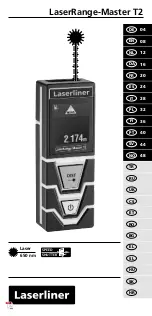
Concepts and features
R&S
®
ZNA
228
User Manual 1178.6462.02 ─ 20
4.7.2.7
Distance-to-fault measurements
Option R&S
ZNA-K2 also offers a special distance-to-fault measurement that allows
you to locate faults and discontinuities on cables and transmission lines.
Faults produce peaks on the impulse response (in the time domain) that is calculated
from the measured reflection S-parameter trace via inverse Fourier transformation. The
distance between the reference plane and the fault can then be calculated from the
propagation time, accounting for the electrical properties of the transmission line.
Moreover it is possible to define the peaks to be considered as being caused by a fault.
The following example shows the reflection at the end of a faultless open cable con-
nected to test port 2. A full one-port calibration ensures that the distance is measured
from the test port position (reference plane = distance zero). The horizontal position of
marker "M2" corresponds to the cable length of 1417
mm, the additional peak at posi-
tion "M1" is due to a bad connection between the cable and the test port.
Adjust the frequency sweep to the length of the transmission line and the expected dis-
tance to fault:
●
The maximum distance that can be measured is proportional to the number of
sweep points. The larger the number of sweep points, the longer the maximum dis-
tance between the calibrated reference plane and the fault to be located.
Optional extensions and accessories
















































